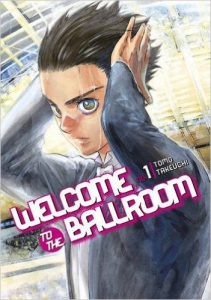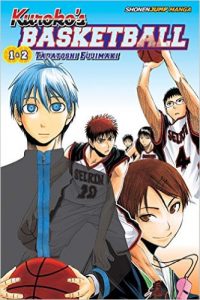Haikyu!! Volume 5 by Haruichi Furudate
I still feel like pinching myself a little bit to remind myself that it is actually real that so much great sports manga is coming out now! I’m trying to get caught up with my manga reading after a very hectic few months at work, and there’s something very relaxing about retreating to a world where everyone’s biggest concern is sports tournaments.
One of the reasons why I like Haikyu!! so much is that the focus shifts around with every volume, so while the odd rookie couple Hinata and Kageyama are certainly progressing with each volume, the emotional core of the story changes to focus on different team members. As Karasuno heads towards a tournament with the weight of their past reputation still following them around, it becomes an opportunity for redemption. Karasuno can be recognized as a legitimate opponent again. One important theme stressed in tournament play is the need to focus on one game at a time. While the bracket facing the team is challenging, they take on their first opponent with a serious sense of purpose. The experience of the boys’ team is contrasted with the girls volleyball team, who falls to their first opponent. Furudate takes a beat to acknowledge how athletes feel when they are knocked out of a season unexpectedly early, without the opportunity to play their sport anymore.
Karasuno faces the “Iron Wall” of Date Technical High school, and here we see how Hinata’s jumping abilities and athleticism have turned him into a great decoy on the court. With the opposing team distracted by his unexpected athletic brilliance, it slowly builds into an opening for Asahi. Some of the more striking panels in the manga show Hinata in the spotlight with Asahi in the background growing more and more intense, until he’s able to prove his abilities as an ace again. Karasuno has shown all the pieces of their team though, and they won’t be able to take advantage of the element of surprise again. Haikyu!! continues to be incredibly gripping and fun.
Kuroko’s Basketball Volumes 3 and 4 by Tadatoshi Fujimaki
In contrast, while Kuroko’s Basketball sometimes feels more like a traditional shonen battle manga transported to the basketball court, with a little less focus on the emotional story associated with sports and a bit more emphasis on defeating opponents who have honed their skills at basketball in order to develop sports superpowers.
Kuroko’s invisibility continues to be an asset to Seiren High, and no surprise they are in a tournament too! They have the tough draw of having to fight two opponents in the same day. First up is Seiho, who have an intimidating center, and a brash player who starts running off his mouth about Kagami being the only good player on the Seiren team. Seiho’s team is difficult to read and defend against, because all their movements are informed by martial arts practices instead of ordinary basketball. Gradually Seiren comes up with unexpected plays that wear the other team down.
The next team contains the best shooter of Kuroko’s old team, “the Miracle Generation”. Midorima’s superstitions are funny, but his insane ability to never miss with a basketball makes him seem more like an overpowered fighting manga villain than a high school basketball player. The shots he makes are so improbable, I was worried about Seiren’s ability to come up with a strategy to defeat him. Along the way Kuroko and Kagami have some interpersonal conflict yet again as Kagami decides that he has to win the game all by himself, which is in direct opposition to Kuroko’s team-driven approach. While there’s a little bit of character development, most of these two volumes was devoted to non-stop dynamic basketball action. I appreciate the omnibus release for this manga, since the story isn’t quite as gripping as Haikyu!! for me, I’d rather read it in larger chunks. This is still an enjoyable manga, even though I don’t think it will reach the iconic status of Slam Dunk.






Recent Comments